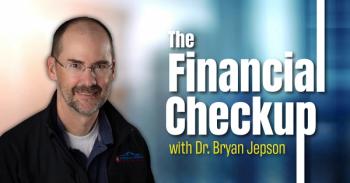
Viewpoint: Gun Violence is a public health problem
The recent shooting at a Connecticut elementary school has rekindled the debate of gun violence. Could addressing the violence as a public health problem curb it
The epidemic of high-profile shootings in recent years-including, most recently, the horrific killings at a Connecticut elementary school-has reawakened a national conversation about ways of curbing gun violence.
The major organizations representing primary care physicians (PCPs) have long recognized the public health aspects of gun violence. In 1987, for example, the American Academy of Family Physicians (AAFP) adopted a policy, “Violence as a Public Health Concern.” In 1995, the organization formally endorsed “robust enforcement of existing federal, state, and local laws and regulations regarding the manufacture, sale, and possession of guns” and opposed private ownership of assault weapons. And following last month’s shootings in Connecticut, the AAFP and the American College of Physicians, among other groups, issued additional statements on the causes and effects of gun violence. (See “Excerpts from physician groups’ statements on firearms.”)
What can you, as a PCP, and your colleagues do to help prevent future gun-related tragedies or deal with their after-effects when they occur? Some suggestions from Jeremy Lazarus, MD, president of the American Medical Association and a practicing psychiatrist:
- Obtain training in how to respond psychologically to such an event, especially in discussing this issue with children. The Center for the Study of Traumatic Stress (www.cts.org) provides resources for facilitating that discussion.
- Learn how to spot signs and symptoms in people exposed to such a tragedy who may need acute or prolonged psychologic or psychiatric intervention.
- Work with others to implement available evidence-based interventions.
- Ensure that adequate evaluations exist to respond to those who might have a mental illness and are planning to commit violence.
- Protect the doctor-patient relationship, and defend the ability of physicians to discuss firearm safety with parents and adults.
As a society, we can look to the past for a solution. We addressed smoking, seat-belt use, and drunken driving as public health concerns, and by taking the same approach with gun violence, the country could bring to bear the resources of government and the private sector to educate people about firearm safety, the warning signs of mental illness, and other prevention strategies. Legislation could play a role as well.
Treating gun violence as a public health problem will not, unfortunately, end the killing of innocent people. But as highly respected members of your communities, you can be leaders in the effort to reduce gun violence.
Send your feedback to
Excerpts from physician groups’ statements related to firearms
American College of Physicians (ACP): “Over the next weeks and months, ACP will review the research on the most effective approaches to reduce firearms-related injuries and deaths, and then from this review, offer our ideas for a multifaceted, comprehensive approach.”
American Academy of Family Physicians: “Because the causes of violence in our society are multifactorial, prevention of violence must address all of its root causes, including the need for mental health care, violence in the media, firearm safety, and others. While we recognize that violence is related to a plethora of factors that must be addressed, we cannot ignore the roles that firearms so often play in these acts.”
American Osteopathic Association (AOA): The AOA’s policy position on firearm safety is that it “supports and encourages strategies such as secure storage and the use of safety locks for eliminating the inappropriate access to firearms by children and adolescents and supports and encourages all physicians to educate families in the safe use and storage of firearms.”
Newsletter
Stay informed and empowered with Medical Economics enewsletter, delivering expert insights, financial strategies, practice management tips and technology trends — tailored for today’s physicians.














